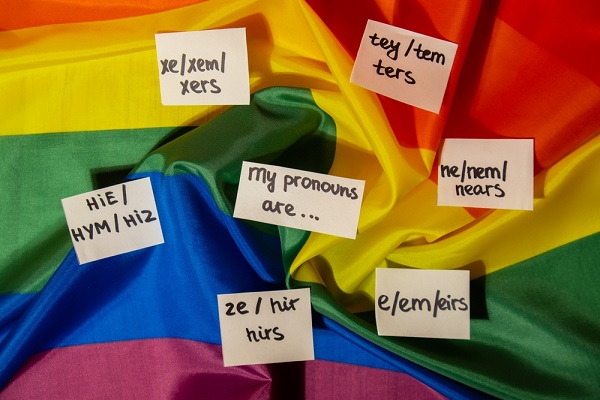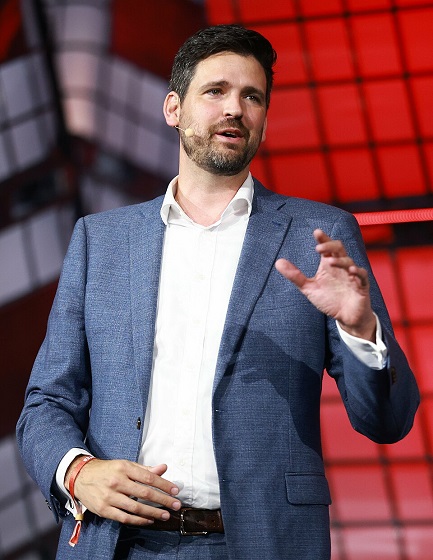Opinion
The repair job at Immigration

|
|
The department’s top bureaucrat answers a critical report, with rare candour
Seven months ago Neil Yeates, a retired former deputy minister of immigration, submitted a report on the organization of the department of Immigration, Refugees and Citizenship Canada to the current deputy minister, Christiane Fox.
Yeates’s 28-page report was blunt, plainspoken, critical but constructive. It said “the current organizational model at IRCC is broken.” At a time of global upheaval and dizzying growth in immigration levels, the department that decides who gets into Canada was no longer “fit for purpose,” he wrote. It was time for “major change.” When? “[T]he advice is to proceed now.”
On Thursday, a copy of Yeates’s report landed in my email inbox.
On Thursday night, Christiane Fox told me she is implementing many of Yeates’s recommendations, and described for me her plans for the department with a level of detail and candour I almost never see in today’s Ottawa.
I’m keeping the paywall off this story because I want it to be widely read. But producing work like this is my full-time job, and I’m able to get stories like this because people understand I’m writing for one of the best audiences in Canadian journalism. If you want to support my full-time work and join that audience, consider subscribing or upgrading to a paid subscription.
Copies of Yeates’s February IRCC Organizational Review Report have been floating around Ottawa because the department began implementing big changes this week. Some of the nearly 13,000 people who work in the department have asked for the rationale behind the changes. Yeates’s 28-page report makes the case succinctly.
Yeates was a top civil servant in Saskatchewan before moving to Ottawa in 2004. He held senior positions in three other departments before becoming deputy minister at Citizenship and Immigration Canada, the department now known as IRCC, where he served from 2009 to his retirement in 2013. That means he was Jason Kenney’s deputy minister for all of Kenney’s time at Immigration, but he was also a Trudeau Foundation mentor if you want to get excited about that instead.
His report’s purpose, he wrote, “is to provide strategic advice to the Deputy Minister on how the department can become a more efficient and effective organization.” After interviewing 36 people inside and outside the department, he decided it was a mess.
‘“[T]he current organizational model at IRCC is broken but is being held together by the hard work and dedication of staff,” he wrote. “At IRCC today department-wide planning is limited and some interviewees suggested it has in fact disappeared completely . There is no multi-year strategic plan, annual plans are not in place consistently across the department and consequently reporting is seen by many as haphazard.”
What the department did have going for it was a decent work environment: “In talking to senior managers at IRCC the culture was universally seen as ‘committed,’ ‘collaborative,’ ‘supportive’ and so on.” The senior managers Yeates interviewed saw this culture as “helping to overcome the shortcomings of the current organizational structure and of the weakness of the governance and management systems.”
The immigration department has always been the main portal between a messy world and an anxious nation. Lately the world had grown messier, Yeates noted, and the demands on the department were starting to hurt. “[T]he operating environment, both nationally and internationally, has grown ever more complex, unstable and frenetic,” he wrote.
In response, “the department has grown exponentially,” from 5,217 staff when Yeates left it in 2013 to12,721 this year, an expansion of 144%. The “Ex complement,” the department’s management cadre, grew from 135 to 227 over the same period, a smaller increase of 68%. That might explain why the department’s managers are so stressed, Yeates speculated. At any rate, the department’s structure was conceived for a much smaller staff and caseload.
To catch up, Yeates proposed big reform in four areas: Organizational Structure, Governance, Management Systems and Culture. He cautioned that tinkering with only one or a couple of those areas wouldn’t have the effect that a “Big Bang,” however difficult, would achieve.
The big problem in Organizational Structure was that the department isn’t organized along business lines: that one of the world’s leading destinations for asylum and humanitarian immigration doesn’t have an assistant deputy minister for asylum, for instance. The obvious challenge was that in a hectic world there will certainly be more crises, like those of recent years. “Should IRCC have a permanent ‘response team’ in place? The short answer is no.” Between crises that team of experienced trouble-shooters would just be twirling their thumbs. Instead Yeates proposed better contingency planning, including lessons learned from other crisis-management departments such as National Defence.
Under Governance, Yeates found a proliferation of over-large committees sitting through endless presentations and not really sure, at the end of each, whether they had decided anything. “Most of the actual decision-making occurs in DMO/ADM bilats,” he wrote, referring to meetings between the Deputy Minister’s office and a given Assistant Deputy Minister.
The section of Yeates’s report that deals with Management Systems reads like a parable of contemporary Ottawa: a “series of periodic crises” that somehow nobody anticipated, “descend[ing] into ‘issues management.’” What’s needed is much better planning and reporting, he wrote. When he was running the department barely a decade ago, every part of the department was reporting on progress against targets every three months. That system has fallen by the wayside. A department that’s obsessed with its “priorities” or with the to-do items in “a minister’s mandate letters” is “inherently limited” and guaranteed to be side-swiped by events intruding from the real world, he wrote.
The upshot of all this tunnel vision was that the department was expecting to “lapse,” or leave unspent, $368 million in projected spending for the year underway, even as passport-related spending was projecting a $238 million deficit.
Yeates’s report closed with the sort of plea that’s traditional in this sort of exercise, essentially pleading not to be ignored. “IRCC is at a crossroads and as Yogi Berra famously quipped ‘when you come to a fork in the road, take it,’” he wrote. Change is hard, but a “substantial majority” of the people he interviewed told him it was overdue.

Neil Yeates and Christiane Fox.
And that’s where the report ends. I had to decide what to do with it. First, always consider the possibility that you’ve been handed a fake report, or the first draft of something that was later amended beyond recognition. I emailed the office of Immigration Minister Marc Miller looking for comment. They handed me off to the civil servants in the department’s communications staff. But I also emailed Christiane Fox, the deputy minister, offering her a chance to comment. This is the sort of chance that people in Ottawa usually don’t touch with a barge pole.
But Fox called me on Thursday night and responded in detail. I asked: was the conversation on the record? She thought out loud for a few seconds, working her way up to a “Yes.” I don’t want to belabour this, but that answer is very rare these days.
The other way you can help me, besides subscribing, is to tell people about the work I’m doing here. Share this story with friends and family, or post it to your social networks. Let people know what we’re building here.
Christiane Fox had been the DM at Indigenous Services for all of 22 months when she was sent to run IRCC in July of 2022. The new job “felt like crisis”: the department was sending weekly updates to an ad hoc committee of ministers whose job was to fix months of chaos in airports and passport offices.
“They felt like they were under duress,” Fox said. “Everyone was exhausted.” New staff were just “tacked on when there was a problem,” including the creation of an entirely new sector for Afghanistan. Fox talked about this with some of the most experienced public servants in town, including Yeates and Richard Dicerni, Fox’s former DM from her days as a young public servant at Industry, who passed away this summer and whose contribution to public life in Canada is hard to measure.
“I kind of said, ‘We’ve got to make some changes. And I don’t want to do it overnight. But I also don’t want to spend two years figuring out what a new model could look like.’” Yeates, whom she didn’t know well but who knew the department’s history, seemed like solid outside counsel.
While Yeates was doing his thing, Fox and the previous immigration minister, Sean Fraser, were consulting — with “business leaders, academics and clients” — about the department’s future. By June of this year, she had a plan, based on Yeates’s report and those consultations. She’s been rolling it out since then, from top managers on down, and on Wednesday, by way of explanation for the changes that are coming, she sent the Yeates report to enough people that I got a copy. A department-wide meeting is scheduled for this coming week.
What’s changing? “The model is now just more of a business-line model,” she said, reflecting Yeates’s first big recommendation.
So there’ll be a stronger crisis-planning sector. In a world that keeps producing humanitarian crises, the goal is to learn lessons for next time from Ukraine, Afghanistan and elsewhere. “Most importantly, we’ll have a group dedicated to thinking about these issues, planning for crisis.” It won’t eliminate the need to “surge,” or quickly add new staff when something flares up. “But in the past, we ended up surging so much that all of our other business lines suffered every time there was a crisis.” The goal now is to get better at anticipating so the department’s regular work doesn’t suffer.
“Asylum and Refugee. There was no Asylum ADM,” she said, reflecting another Yeates critique. “This is probably the thing that causes me the most heartache, in terms of, how are we going to deal with this as a country, globally? What are some of the tools that we have? How do we support the most vulnerable? How do we have a system that is fast and fair? So Asylum and Refugee will now be a sector within the department.”
In addition, there’ll be a sector focused on Economic Immigration and Family. “The business community didn’t really feel like we were actually talking to them about labour shortages, about skills missions, about what is the talent that the country needs.” And a sector on francophone immigration, identifying French-speaking sources of immigration and taking into account the needs of French-speaking newcomers.
“Other sectors remain kind of consistent. Like, we’ve always had a focus on border and security, but we will now have a team that’s really migration integrity, national security, fraud prevention, and looking at case management in that context.”
Fox said she’s working on more of a “client focus” in the department’s work. “When I joined the department I remember, my first few weeks, thinking, ‘Everybody talks about inventory and backlog and process.’ But I didn’t feel clients and people were at the forefront.” This may sound like a semantic difference. But anyone who’s been treated as inventory and backlog can testify to the potential value in any reform that restores a measure of humanity to recipients of government service.
I’ve been arguing for months here that simply acknowledging problems and identifying possible solutions is better communications than the happy-face sloganeering that passes for so much of strategic comms these days. Here, quite by accident, I’d stumbled across somebody who seems to have had similar thoughts. (There’s an irony here, because Fox’s CV includes a long stint as a director of strategic communications in the Privy Council Office.)
“There will be things that will come up,” Fox said, “that may not be as smooth a transition as we thought, or maybe a bit clunky, that we need to rethink. What we’ve told the employees is, it won’t be perfect. We needed to change, we’re going to change, but there’s going to be room for conversation around issues that arise as we go through this process.”
To subscribe to the full Paul Wells experience, upgrade your subscription.
Censorship Industrial Complex
School Cannot Force Students To Use Preferred Pronouns, US Federal Court Rules


From the Daily Caller News Foundation
“Our system forbids public schools from becoming ‘enclaves of totalitarianism.’”
A federal appeals court in Ohio ruled Thursday that students cannot be forced to use preferred pronouns in school.
Defending Education (DE) filed the suit against Olentangy Local School District (OLSD) in 2023, arguing the district’s anti-harassment policy that requires students to use the “preferred pronouns” of others violates students’ First Amendment rights by “compelling students to affirm beliefs about sex and gender that are contrary to their own deeply held beliefs.” Although a lower court attempted to shoot down the challenge, the appeals court ruled in a 10-7 decision that the school cannot “wield their authority to compel speech or demand silence from citizens who disagree with the regulators’ politically controversial preferred new form of grammar.”
Because the school considers transgender students to be a protected class, students who violated the anti-harassment policy by referring to such students by their biological sex risked punishments such as suspension and expulsion, according to DE.
Dear Readers:
As a nonprofit, we are dependent on the generosity of our readers.
Please consider making a small donation of any amount here.
Thank you!
“American history and tradition uphold the majority’s decision to strike down the school’s pronoun policy,” the court wrote in its opinion. “Over hundreds of years, grammar has developed in America without governmental interference. Consistent with our historical tradition and our cherished First Amendment, the pronoun debate must be won through individual persuasion, not government coercion. Our system forbids public schools from becoming ‘enclaves of totalitarianism.’”
OLSD did not respond to the Daily Caller News Foundation’s request for comment.
“We are deeply gratified by the Sixth Circuit’s intensive analysis not only of our case but the state of student First Amendment rights in the modern era,” Nicole Neily, founder and president of DE, said in a statement. “The court’s decision – and its many concurrences – articulate the importance of free speech, the limits and perils of public schools claiming to act in loco parentis, and the critical role of persuasion – rather than coercion – in America’s public square.”
“Despite its ham-fisted attempt to moot the case, Olentangy School District was sternly reminded by the 6th circuit en banc court that it cannot force students to express a viewpoint on gender identity with which they disagree, nor extend its reach beyond the schoolhouse threshold into matters better suited to an exercise of parental authority,” Sarah Parshall Perry, vice president and legal fellow at DE, said in a statement. “A resounding victory for student speech and parental rights was long overdue for families in the school district and we are thrilled the court’s ruling will benefit others seeking to vindicate their rights in the classroom and beyond.”
armed forces
It’s time for Canada to remember, the heroes of Kapyong

“Be steady, kill and don’t give way!”
— Lieut.-Col Jim Stone’s order to his troops on the eve of battle
Korean peninsula, April 1951.
It’s spring in Korea, and things are warming up from the preceding brutal cold.
You are tired and hungry, and full of fear.
Your only friend, is a standard issue Lee-Enfield No. 4 Mk 1. A reliable bolt-action rifle in use for over a half century, and it’s got a mean kick.
But that badge on your shoulder, the Princess Patricia’s Canadian Light Infantry Regiment (2PPCLI) gives you confidence.
So does commander Lieutenant Colonel Jim Stone, a Second World War veteran.
And you are one mean mother-fucker, to put it nicely. Spoiling for a fight.
Instead, North Korean forces have been pushed across their border back into the North. It looked like an easy stint, garrison duty no less.
The thought of meeting one of those nice Korean girls wasn’t far away, and maybe having one of those weird Korean beers.
Man, was that about to change.
While gung-ho US General Douglas MacArthur repeatedly refused to heed Chinese warnings and US intelligence reports, China launched a massive surprise counteroffensive with approximately 300,000 soldiers, catching the overextended UN forces completely off guard.
MacArthur’s misjudgment was a critical error that prolonged the war for another two and a half years.
And a fellow named Hub Gray, a Canadian from Winnipeg, would end up in the maelstrom.
What was at stake? Hill 677, which controlled the entrance to the Kapyong River Valley north of Seoul. Beyond that, there was nothing, absolutely nothing, stopping the advancing communist forces from retaking Seoul.
The hill was a critical last stand.
The Aussies took it on the chin, first.
The 3rd Battalion, Royal Australian Regiment (3 RAR), bore the brunt of the initial attack and after heavy combat were forced to withdraw, with 155 casualties.
Captain Reg Saunders, the first Aboriginal Australian to be commissioned as an officer in the Australian Army, was Officer Commanding C Company, 3 RAR.
After the battle, he said: “At last I felt like an Anzac, and I imagine there were 600 others like me.”
While the Australians fought bravely, Stone ordered his Canadians, about 700 troops, to dig in on Hill 677 and prepare to repel a large brigade of massing Chinese forces, estimated at nearly 5,000-strong.
After attacking the Australians, the Chinese turned their attention to the PPCLI.
Death was on the menu, not a picnic. In waves.
The Canadians risked being wiped out. Outnumbered and outgunned.
As expected, on the night of April 22, 1951, an entire Chinese communist division swarmed them, hoping to take Seoul, only a few miles away. 2PPCLI was surrounded, and on its own.
It was a terrifying night of positions lost and retaken, hand-to-hand fighting in the dark, with bayonets, grenades, rifle butts and shovels.
Private Wayne Mitchell, despite being wounded, charged the enemy three times with his Bren gun. He earned the Distinguished Conduct Medal for his efforts.
The relentless waves of Chinese soldiers almost overran the position of D Company.
With his men securely entrenched below ground, company commander Captain J. G. W. Mills, desperate and overrun, called for an artillery strike on the position of his own 10 Platoon — what the Americans called “Broken Arrow.”
He relayed the request from Lieutenant Mike Levy, who was hunkered down with his men in shallow foxholes on the hill.
A battery of New Zealander guns obliged, firing 2,300 rounds of shells in less than an hour, destroying the Chinese forces on that position.
Though the barrage landed just metres from Levy’s position, he and his men were unscathed.
“I remember sitting down there in that trench one time during that fight and I was shaking and I was thinking, ‘What the f–k are doing here, you dumb shit?”‘ said Ernie Seronik, a member of the 2PPCLI’s D Company.
“You really can’t tell people about it, can’t describe it. You can’t know what it’s like until you’re there, the fear you have, and it stays with you. I was scared all the time.”
“When you sit in the dark and are looking for and waiting for them to appear, every stump that is out there is a person, the enemy,” recalled Seronik.
“At that time, the real terror comes from not knowing what’s going to happen to you. At any time a bullet can come out of nowhere and you’re dead. It happened a lot.”
At one point, a Chinese officer yelled, “Kill the American pigs,” in Chinese.
Levy, a platoon commander who understood the dialect, yelled back:
“We are Canadian soldiers, we have lots of Canadian soldiers here.”
Desperate, the Chinese attacked battalion headquarters from the rear. Hoping to break the Canadian lines.
If HQ fell, the Canadians would be driven off the hill and the road to Seoul would be open. It did not fall, in part thanks to Hub Gray.
He was in charge of a small mortar-machine gun unit. Coming at them: about 500 battle-hardened Chinese.
With the enemy almost on top of them, Gray’s men opened fire, the Chinese attack stalled, and then fell apart, described by one Canadian as “like kicking the top off an ant hill.”
Through it all, Stone refused to allow his men to withdraw, as he believed the hill was a critical strategic point on the UN front. He was right, it was.
Veteran David Crook, remembered the battle all too well.
“From sheer boredom to sheer terror. At times it didn’t stop. And then you’d get lulls where the enemy would be regrouping for another attack so we’d get a bit of a breather to think a little bit. But, most times it was just non-stop,” he said.
While they defended the hill, the Canadians were cut off and had to be supplied via air drop.
As Canadian soldier Gerald Gowing remembered: “We were surrounded on the hills of Kapyong and there was a lot of fire. We were pretty well out of ammunition and out of food too. We did get some air supplies dropped in, but we were actually surrounded… that was a scary moment, let me tell you.”
The Canadians were down to their last bullets when the Chinese advance finally broke. Hub’s machine guns had saved HQ.
Kapyong did not fall. Nor did Seoul. The Canadians held firm their positions.
The 2PPCLI were eventually relieved on the front line by a battalion of the 1st US Cavalry Division.
The battle contributed significantly to the defeat of the Chinese offensive, protecting the capital city of Seoul from re-occupation, and plugging the hole in the UN line to give the South Koreans time to retreat.
Both the Canadians and the Australians received the United States Presidential Unit Citation from the American government.
Five men in other units were (rightly) decorated for bravery that night. Hub Gray was not among them.
Levy wasn’t recognized for his bravery until 2003, when Governor General Adrienne Clarkson granted him a coat of arms.
In later years Hub Gray wrote his own account of Kapyong (Beyond the Danger Close) with a vivid account of the fighting, but made no mention at all of his own vital role. You’d scarcely know he was there.
But he was. A true Canadian hero. Along with all the rest.
Every child/student in Canada, should know their names, and what they did.
Hubert Archibald Gray known as “Hub” to all his friends, passed away peacefully in his sleep on Nov. 9, 2018, in Calgary, with family at his bedside. He was 90.
— with files, from the National Post
If you enjoyed this post, you can tell THE MAKICHUK REPORT that their writing is valuable by pledging a future subscription.
-

 COVID-192 days ago
COVID-192 days agoFreedom Convoy leader Tamara Lich to appeal her recent conviction
-

 Business2 days ago
Business2 days agoThe Liberal budget is a massive FAILURE: Former Liberal Cabinet Member Dan McTeague
-

 Business2 days ago
Business2 days agoCarney’s budget spares tax status of Canadian churches, pro-life groups after backlash
-

 Justice2 days ago
Justice2 days agoCarney government lets Supreme Court decision stand despite outrage over child porn ruling
-

 Daily Caller1 day ago
Daily Caller1 day agoUN Chief Rages Against Dying Of Climate Alarm Light
-

 espionage1 day ago
espionage1 day agoU.S. Charges Three More Chinese Scholars in Wuhan Bio-Smuggling Case, Citing Pattern of Foreign Exploitation in American Research Labs
-

 Business21 hours ago
Business21 hours agoCarney budget doubles down on Trudeau-era policies
-

 COVID-1921 hours ago
COVID-1921 hours agoCrown still working to put Lich and Barber in jail














